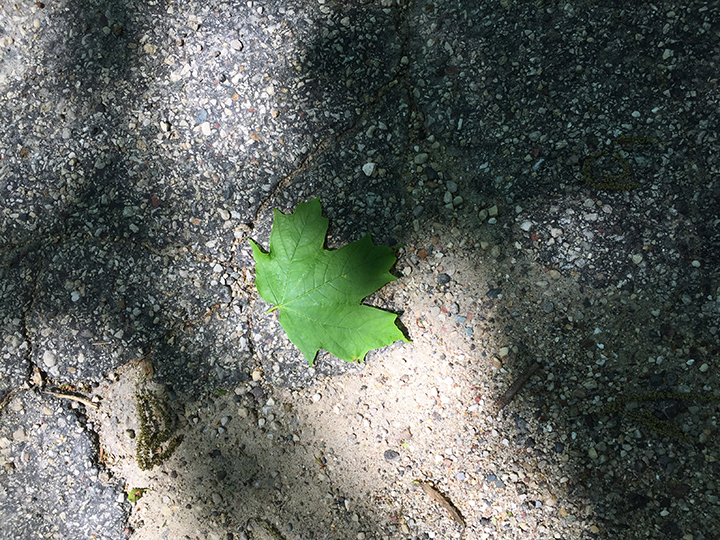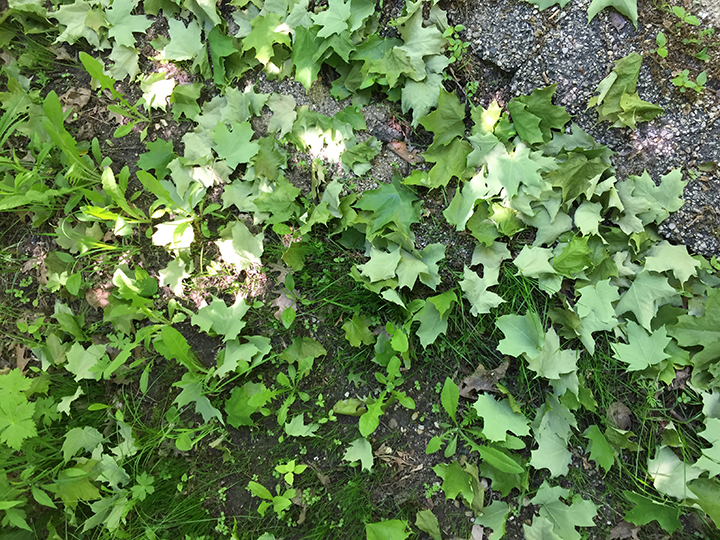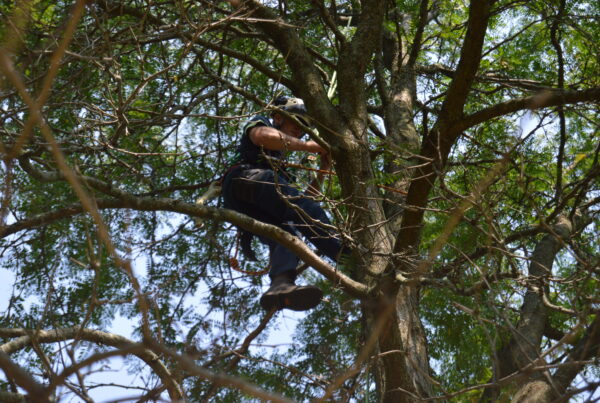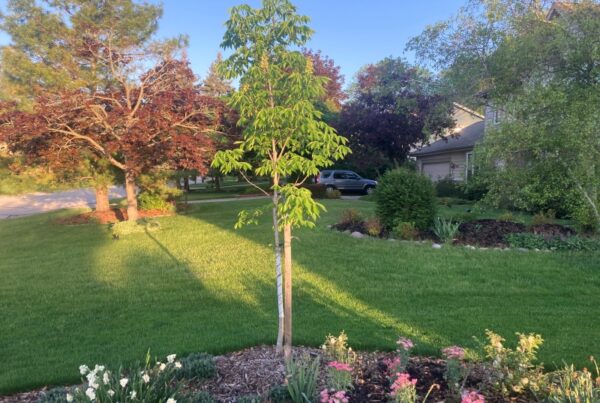As we transitioned from spring to summer in southeastern Wisconsin, you may have noticed some changes among the trees in your yard.
Perhaps there were leaves not typically smooth and green in color, but instead had spots, were brown on the edges, or dropping from the tree.
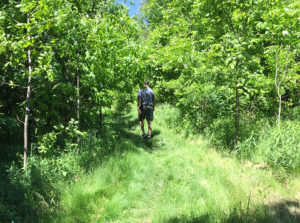 Tree leaf loss is not uncommon outside of the fall season.
Tree leaf loss is not uncommon outside of the fall season.
Spring
Some trees experienced leaf drop in our area earlier this year around the start of spring. Colder temperatures were the primary suspect, and thankfully recovery is usually not an issue.
Anthracnose is a fungus that can cause early leaf drop, especially among shade trees like oak, ash and maple. It usually occurs when the weather is cool and wet in the spring, causing leaf drop into early summer. While the signs of tan, or darker brown spotting on curled up leaves may look startling, the tree will likely sprout new leaves in the weeks following and any damage is usually minimal, especially to trees that are well-established. One suggestion while waiting for the tree to green out again is removing any fallen infected leaves.
If you have trees that continue to show signs of a fungal infection each year, they may need to be sprayed in the early spring to protect new growth.
Summer
Trees may shed leaves to conserve moisture during the summer months when conditions are hot and dry. However, if you have a tree that you suspect doesn’t naturally lose leaves this time of year, it could be a sign of infection and should be inspected by a professional arborist.
Even without a full canopy, if the tree is healthy, it will still have plenty of twigs and buds. If the tree has plenty of stored energy, it should survive to the next spring season. But if the buds are dying and twigs are breakable anywhere on the tree, it should be examined by an arborist for diagnosis.
Always know your tree species to determine what to expect as it grows and matures in your yard. If you have any questions, contact our arborists at American Tree Experts for a consultation.
